By Prof. G. L. Shekar
A study conducted by a group of civil engineering students of the National Institute of Engineering (NIE), Mysuru, recommends development of a multimodal transport network for Mysuru urban area that is compatible with the Comprehensive Development Plan (CDP) 2031. The project involves planning of multiple bus stands at corridors, Bus Rapid Transit System (BRTS) along arterial roads and ring rail along th eOuter Ring Road.
The study was taken up in 2017 when metro work was in full swing in Bengaluru. The NIE team wanted to explore future requirements of such a metro project for Mysuru as well. Thanks to Chairman H.V. Rajeev, Mysuru Urban Development Authority (MUDA) has taken proactive measures in getting a Metro Neo Corridor project to Mysuru. However, the NIE team has a different proposition — BRTS-based multimodal network.
Dr. K. C. Manjunath, Head of Civil Engineering Department and project guide at NIE, says that the proposed multimodal network is quite cost effective and it provides an efficient public transportation system. Based on the data provided by MUDA and KSRTC, CDP (Master Plan) and survey information, the project was carried out under the title “Planning of Public Transport for Mysuru City Master Plan-2031” by four students — B.S. Samatha, M. Nikhilash, K. Poojitha and Manikantha Reddy S. Benal.
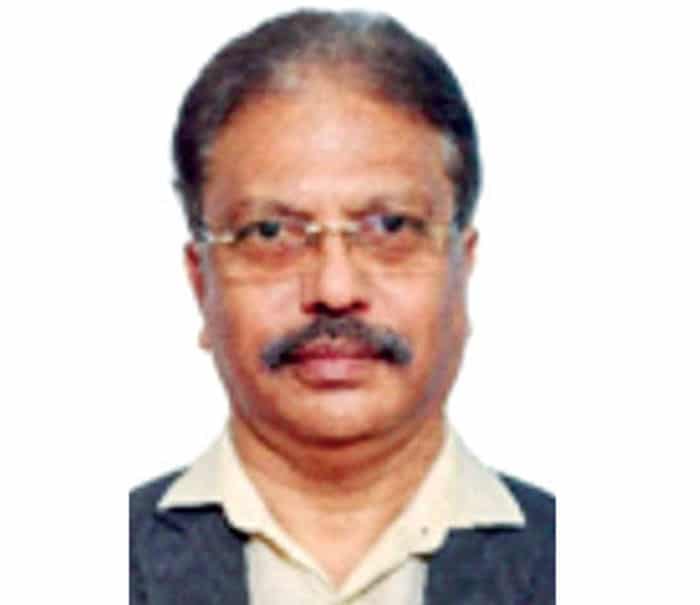
Mysuru city has a radial and grid-iron pattern road network with arterial roads originating from the city centre. However, increase in both population and motor vehicles has resulted in congested roads and delay in transportation. Public transportation is largely by bus and it serves only 17 percent of the Local Planning Area (LPA) population as per 2016 data.
Due to lack of interconnectivity between the planning districts, the existing public transportation is inadequate for present and future population. It is projected by trend method that by 2031, Mysuru’s urban population will be 20 lakh.
The city is well connected by road, rail and airport. Mysuru is connected by National Highway (NH-766) to the State border town of Gundlupet, where the road forks into the States of Kerala and Tamil Nadu, and National Highway-275, which connects Mysuru to Bengaluru. The city has 5 main arterial roads, which are also the Highways connecting Bengaluru, Madikeri and Hassan, Ooty, T. Narasipur and H.D. Kote and Manandavadi (SH-33).
The total road network in the city in 1971 was 335 km. It increased to 432 km in 1981 which accounted for 29 percent of increase over a decade. There are 48 main roads covering a total length of around 58 km. Now, the total length of all types of roads is over 1,200 km.
The total number of intersections is 210 out of which 30 have traffic signal lights, 22 have blinkers and 158 are controlled manually by Policemen (2017 data). Various modes of vehicles have grown in the past four decades from 4 times to 25 times with the highest growth seen in two-wheelers and cars.
The current mass transportation in Mysuru is mainly through bus and is supplemented by private transport of four-wheelers and three-wheelers.

Bus Rapid Transit System
Bus Rapid Transit System (BRTS) is a bus-based public transport system with dedicated median lanes to buses. It combines capacity and speed of a metro with the flexibility, lower cost and simplicity of a bus system. The system fully utilises existing roadways, right-of-way, and station sites.
Further, technology systems like automatic vehicle location, passenger information, signal priority and “Smart Card” type fare collection can be easily incorporated. BRTS systems can also provide a broad array of express, limited-stop and local all-stop services on a single facility without complex signal and guide-way switching systems.
As far as Mysuru is concerned, BRTS is proposed for arterial roads. The capital costs of the project include busway infrastructure, stations, buses and technology systems. The cost is about Rs. 15 crore per km considering Ahmedabad’s BRTS project.
Though BRTS is planned for arterial roads, microbuses of 20 to 25-passenger capacity are recommended for connecting the planning districts within the arterial roads. These buses can be step-entrance vehicles or low floor buses.
Based on the preliminary investigation of various urban rail transit systems and by considering factors such as aesthetic view, low cost of construction and flexibility, the study suggested to consider Straddle Beam Type Monorail (ring rail) for Outer Ring Road of Mysuru.
The ring rail is a circular rail network that runs parallel to the Ring Road and acts as a feeder network for multiple bus stands at corridors. Since the length of the Outer Ring Road in Mysuru is about 42.5 km with average width of 45 mts, ring rail is planned.
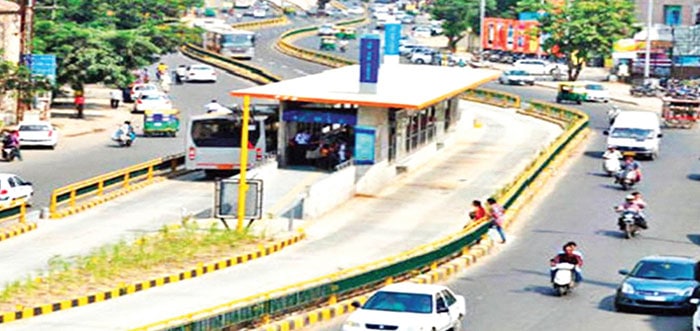
The study involved collecting primary data on classified traffic volume counts on major roads, O–D (origin–destination) survey reports and road inventory details. Secondary data was studied from the transport model from the Comprehensive Mobility Plan (CMP) report related to the trip generation and zones and destination zones. Further, the existing and proposed land use and activity pattern was studied from the City Development Plan and Master Plan.
The resultant outputs were aligned towards identifying demand corridors for mass transport system, engineering and land use feasibility. The study data is used to plan multiple bus stands at junctions of Outer Ring Road and arterial roads so that traffic decongestion is possible in the Central Business District.
Multimodal public transport using BRTS in arterial roads and monorail as ring rail can serve up to 30 percent of LPA population. Dr. N. V. Raghavendra, NIE Principal, is confident that civil engineering faculty members at NIE can address the planning and design challenges of multimodal public transport.
Since MUDA has plans for Metro Neo Corridor, experts should compare cost per km of the proposed metro with multimodal public transport as recommended by NIE. We need to thoroughly examine whether there is sufficient road width, especially on the Ring Roads, to build bi-directional monorail and BRTS networks. Perhaps, NIE can initiate debate and consultation with urban transport experts.
[Prof. G.L. Shekar is Advisor-Technical Education. This project was initiated when he was NIE Principal]



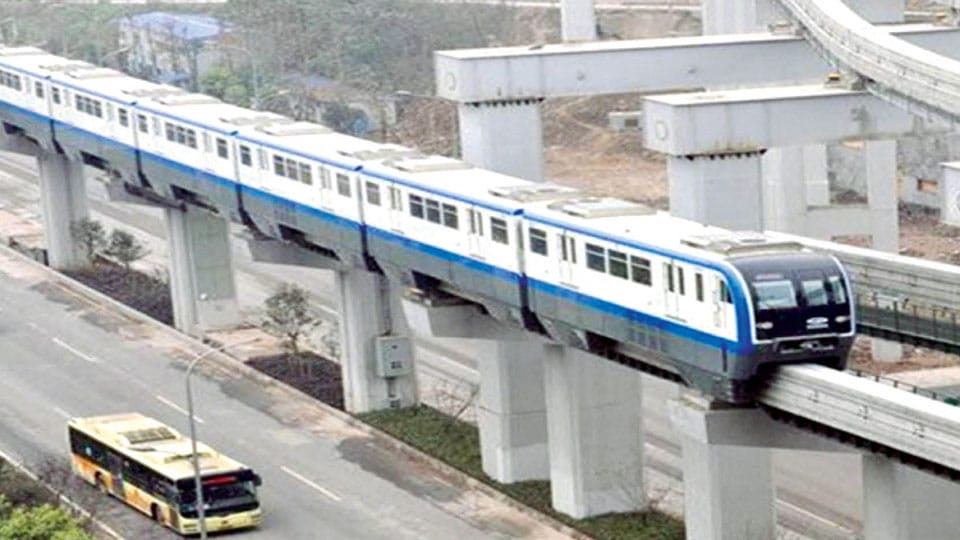
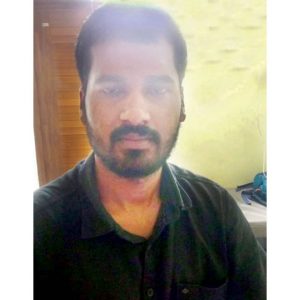
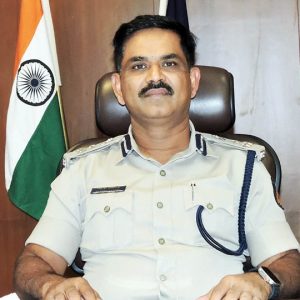
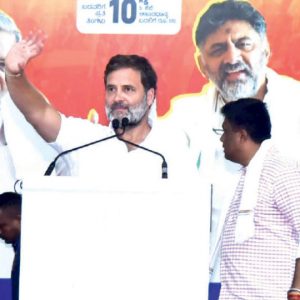
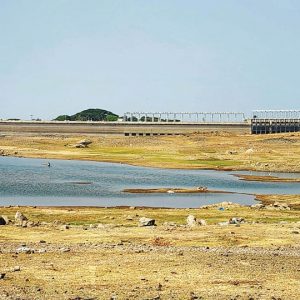
Very informative. Unfortunately the decisions are not made on science but the kickbacks that the MUDA, MCC, politicians and their chelas can get
Who is going to fund this mode of transport? The politicians in power will fight to gain momentum of this project before the next general election. After all the ruling party require funds, this is the fastest means. Why no one is bothered about providing cross city public transport. The age old central system is not changed. For example to visit Saraswathipuram, from Hebbal one has to go to City bus stand, change bus there. This is ridiculous. Here we are talking of BRTS. Our town planners are nothing short of jokers .
Some wishful thinking absurdity, the stuff academics come up with, having had no experience of the real world dynamics. These days, this would not be even worth in a presentation in an urban transport conference.
Once an academic in a closeted plastic bubble, when I moved to work in real world projects- I realised then how esoteric thinking goes on in academia, ignoring the practicalities of cost, budget constraints, viability issues,, structural imperatives, man power requirements etc.. No wonder his colleague in the same institution, endorses this paper exercise!
What is more serious than the article’s paper exercise, is similar clouded thinking goes in all the national laboratories like the NAL, supported by crores woth funding, which in the end, amounts to nothing. The Indian government , hence had to go for Rafales jet fighters from France, as NAL, a glorified academic -like institution came up with absolutely nothing.
Sir MV, had little faith talking about ideas , as he focused on the issues confronted when the work he planned was carried out. He used to emphasise the latter, when civil engineering degree students met him in his house in Bengalore. He received many of them .
This person is worth listening to what he says, if as the principal of NIE had focused on running his institution better, to make, it an outstanding institution once it was, and not as an also run institution in his tenure, as compared to the institution which arrived decades later,, and which has since progressed into an university.
I agree with the above poster, Worthless , academic wishful exercise on paper, not even worth as a poster in reputed transport conference!
The study by the students mentioned is not a study at all, as even a cursory search in the Internet, would reveal, such systems are already in place In European cities- medium and large ones alike for a few decades. Indian students, notoriously lack the honesty of citing examples, and this study seems a representative of such approach.
A number of Europeans cities, medium and large have been operating a true multimodal public transport system with a mix of overground and underground trains, trams and buses.
Initially, the ticket approach was built around with a bulk purchase of tickets at a discount price, each one, punched on the day of use,for use of the whole day concerned, and was usable in a variety of modes of transport systems: over ground and underground trains -the latter subways, trams and buses. Since a decade, With the advent of new technologies, smart cards purchased on a monthly basis for example enable the passengers to use any of the mode of transport interchangeably in a ”automatic vehicle location, passenger information, signal priority ‘ situation. There are already facilities underway to make use of the cell ( mobile) phone-tailored apps dispensing with the use of smart cards.
One should however be aware, I bet this students’ study did not go into it, such a multimodal system as a priori requires honest passengers and honest and incorrupt officials , which is a rarity in India. Hence, as posters above put it, it is :’a pie -in the sky’ academic exercise on the paper!
Indians love cars, more as a prestige symbol, the foreign model, the better! The multi-lane highway connecting Mysuru and Bengaluru, illustrates the disastrous thinking based on car ownership. The excuse here is that the public transport is inconvenient and unreliable, which is true., but there is no serious study on the contributing factors. If private vehicle traffic for example, makes city buses unreliable as a major factor, then the very idea on paper of a multimodal transport system, falls on this first hurdle, unless, a subway mode is included. Even then, with the private transport embedded in mind of many Indians, this multimodal transport system may not shift people from cars and two wheelers on to the public transport.
So, it is not clear whether a serious survey was done in the study mentioned, about the aforementioned, without which the very idea is doomed to be a failure as it involves massive public funding for a start, with very little benefit in return.
When the BARTS ( Bay area rapid transport system0 was mooted in the US 50 years ago, using just 2 modal system, we wondered then the effect of it. But then , BARTS is saved from extinction by student passengers who were studying in the Californian state university cluster.
Car-loving countries like America and Australia for example, would not countenance multi-modal transport system for their cities-although in some American cities, the emergence of street cars ( trams) is hoped to contribute some positive positive results in a limited sense.
I too agree with the posters above, and add that the rapid rise of population gradually will undermine such transport system in the medium term itself.
I want to congratulate students and their advisors for having taken up the challenge of taking up the transportation project. It is easy to point out the obvious faults and drawbacks of the study. When we consider the current school environment where exams are stressed and nothing else, taking up a challenging topic of solving the transportation problem would not have been easy.
I agree with the comments of those who have been critical of the studies. Undoubtedly practical use of a study like this which requires a great deal of expertise in several area is certainly questionable. While it would be great if a student study can be applied with some minor modifications for practical use. Even in the case of the world class universities, such a possibility in the case of under graduate project is rare.
What is needed is that NIE should form a cell to study this further and contribute to solving the transportation problems of the city. When the next CDP is taken up, NIE should offer their services.
I am happy this project was taken up, even if one cannot use it for any practical use.
Mysuru had a an enviable eco system balance until the late 1960s, when massive numbers of retirees, who had no connection with the City before, begaan arriving to anchor their homesteads which necessitated deforestation at the borders of the City to create a dozen or more new hosing extensions. That was just the start with the total destruction of the eco system that has followed.
I find it ironical but not surprised given the typical hypocrisy of Indians, that these above new arrivals, are now shouting about green issues, ecosystem destruction, multimodal public transport system! The aforementioned extensions necessitated the use of petrol -driven vehicles in very large numbers for travel within the City,. These new residents quickly took to the petrol-vehicle ownership with enthusiasm, became pioneer pollutants. One finds today eco warriors amongst them, as it is politically fashionable, not of conviction ofcourse!
India has joined the ranks of third world countries like Brazil, where the two and four wheeler ownerships have become the new norm. The car culture in America and Australia was born out of misplaced necessity at one time, and these countries are fighting to shake out of it, but find it almost i impossible against the individual wishes. After all, these have votes! But countries like India which was at an advantage as late comers could have discouraged the hold of the above culture, and pioneered instead , expansion of the public transport networks within their cities as an alternative. Once people get hold of the above culture as evidenced in America and Australia, it is impossible to propose any exo-friendly alternative. India had an excellent opportunity to avoid the American debacle, , but it failed, not surprisingly
In the background of multi-lane highway expansion between Mysuru and Bengaluru to encourage the owners of the petrol-driven vehicles to travel on the road, and the increasing expansion of Mysuru perimeters, the well-embedded private vehicle ownership culture which if anything is expanding massively too as a matter of individual prestige in many cases, the exhortation of encouraging a paper exercise study on the introduction of multimodal public transport network in the City sounds very hollow indeed. But cynically it sounds excellent cause for a political platform!
In Europe where I live, the destruction of eco system is taken very seriously. We can walk to a showrooms of popular models of cars, and drive home the new model within a couple of hours or choose a number of large used car sales parking lots outside the city, and drive home a relatively new car within a couple of hours with a secured finance package. But yet, the government and people, opt for the strengthening of the already excellent multimodal public transport system within and without the city to address the climate change imperatives. It is so different from my previous American abode. I should hasten to add that the BARTS, which was developed when I was working there, was saved not by the general public using it, but the students who needed inexpensive transport within the California state university cluster.
Any paper exercise of this nature, needs a scientific underpinning process; hence has to as a priori, do a serious study of the issues relating to expansion of petrol-driven vehicle ownership culture, the government’s intentions plans in regards to public transport-it is clear looking at the expansion of the highway lanes that Karnataka government is not serious about the eco system issues. Without massive injection of taxpayer funds, even a skeletal introduction of multimodal transport structure is impossible to achieve. Mere top-down study even at best a worthless paper exercise, which Indian universities and scientific institutions are good in churning out.
I see this article as a publicity exercise to the institution of which the author was a past principal, not a successful one I should add as the main rival institution marched far ahead with foresight ideas and as the poster put it has become a science and technology university. This publicity exercise will not help this institution’ which in the past deliberately let go several opportunities given to it to become a central institution ‘ or a Mysore university’s university engineering college. I as some one studied there 6 decades ago, when it was a reputed sole engineering college in the City, agree with @Kautilya, that this institution has now become an ‘also run” City. Here I quote what the erudite Abba Eban, the Israel Foreign minister said about Palestinian leaders: they ‘never miss an opportunity to miss an opportunity’.
As @Shantala points out, there are examples of European cities of similar size, which have in place for decades, successful multimodal transport network, and yet is touted as perhaps a new study as no references are made to them. Not surprisingly, this institution’s inadequacy will be evident, if above examples are cited, and questions are asked about the uniqueness of this study, albeit in Mysuru context.
The intended publicity will be turned on its head. Sad for people like me, but not surprised at all.
Sounds more like publicity attempt for an institution which is lost out through gross mismanagement intentionally missing opportunities for advancement to preserve a narrower governing body interest. Posters have well pointed this out. Not surprisingly, this institution which has lost its lustre long ago, has produced something like this, too late even as a paper exercise., which at best is not even a serious paper -based endeavour-posters above have given reasons for this. This says more about this institution.
This study was done in the backdrop of massive road and air transport expansion initiatives-expanding highway lanes between Mysuru and Bengaluru, and upgrading the current point-to-point air travel through the proposed expansion of the airport infrastructure introducing long-haul jet aircrafts for international travellers. These are money -spinning initiatives
The pollution by the above two is just enough more than to negate any environmental gains achieved through any proposal multimodal travel network., besides besides being no financial gain for the government, which is not interested in environment gain as evidenced by the above two initiatives.
Mysuru is going the same way as Bengaluru with the inexorable expansion of the City, sucking in more residents through creating more residential extensions, more industries of sorts, thus firmly embedding the car culture. The state government has foreseen this and hence the highway lane multiplication. The car culture too is a massive money-spinner, taxes are involved as opposed to public transport drain of finance
requiring massive fund injection from the government. There are no votes in the elections here.
The state government and (indeed the central government too) which are notoriously disinterested in environmental issues. In any serious internal meet on climate change, India like China, the massively populated country, has argued that as late comers to automobile uptake, they are not interested in the arguments of western countries, which they say benefitted by it, hiding the fact that the country is not interested at all in the matters of the environment..
John Kerry, the failed secretary of state for the failed president Obama, now an environment Czar for the old papa Biden, praised the other day India’s serious effort in regards to environment. Many wondered what planet this person is living to say that, but understood the wider Machiavellian politics involved: setting up India against China in the matters of Afghanistan, knowing that India will fall for any unadulterated lie as long as it is clothed as a praise!!